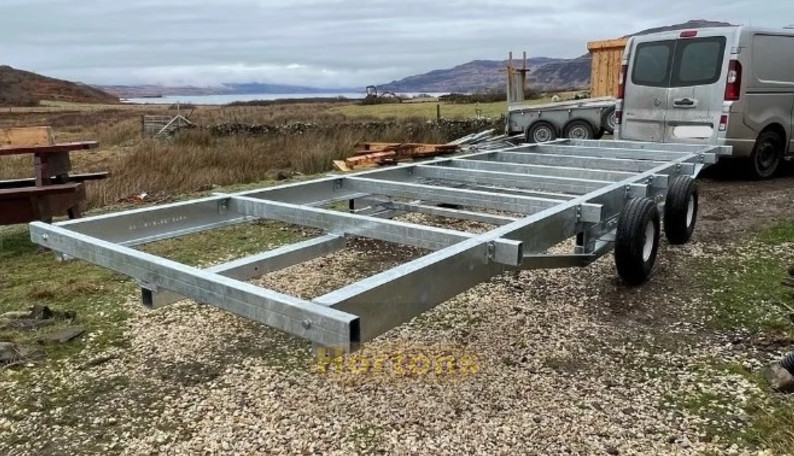Replacing a mobile home chassis is a significant undertaking. It’s the foundation of the home, providing structural support and stability. Several factors will influence the cost if you live in Florida and need to replace your mobile home chassis. This article will break down the various aspects involved and give you an idea of what to expect financially.
Understanding the Mobile Home Chassis
The chassis of a mobile home is the metal frame that supports the entire structure. Over time, this frame can become damaged due to weather, age, or poor maintenance. If the chassis is compromised, it can affect the stability and safety of the home, making replacement necessary.
Factors Affecting the Cost
- Size of the Mobile Home
- Larger homes require more materials and labor, increasing the cost. Single-wide homes will cost less to replace than double-wide or triple-wide homes.
- Type of Chassis
- Standard steel chassis are common, but some homes may have upgraded or reinforced frames, which can be more expensive to replace.
- Labor Costs
- Labor costs can vary widely depending on the complexity of the job and the rates of local contractors. Skilled labor is crucial for this task, and costs can be higher in areas with a higher cost of living.
- Permits and Inspections
- Replacing a chassis will require permits and inspections to ensure the work meets local building codes. Permit fees vary by county and can add to the overall cost.
- Location
- The cost can also be affected by the home’s location within Florida. For example, coastal areas might have higher costs due to increased demand and cost of living.
- Condition of the Mobile Home
- If the mobile home has additional structural issues, those will need to be addressed during the chassis replacement, adding to the cost.
Cost Breakdown
- Materials
- The cost of materials for a chassis replacement can range from $2,000 to $5,000, depending on the size and type of chassis required.
- Labor
- Labor costs for this type of project can range from $3,000 to $10,000. The complexity of the job influences this range, the need for skilled labor, and local labor rates.
- Permits and Inspections
- Permits and inspections can add $500 to $2,000 to the cost, depending on the county and specific requirements.
- Additional Repairs
- If there are other structural issues, such as water damage or problems with the flooring, these will need to be repaired during the chassis replacement. Additional repairs can add $1,000 to $5,000 or more to the total cost.
Total Estimated Cost
Considering all the factors and costs, replacing a mobile home chassis in Florida can range from $6,500 to $22,000 or more. Here’s a detailed breakdown of different scenarios:
- Single-Wide Home with Basic Chassis
- Materials: $2,000
- Labor: $3,000
- Permits: $500
- Total: $5,500
- Double-Wide Home with Standard Chassis
- Materials: $3,500
- Labor: $6,000
- Permits: $1,000
- Total: $10,500
- Triple-Wide Home with Reinforced Chassis
- Materials: $5,000
- Labor: $10,000
- Permits: $2,000
- Total: $17,000
- Double-Wide Home with Additional Structural Repairs
- Materials: $3,500
- Labor: $6,000
- Permits: $1,000
- Additional Repairs: $5,000
- Total: $15,500
Steps to Replace a Mobile Home Chassis
- Assessment
- A professional needs to assess the chassis’s current condition and the mobile home’s overall structure. This step is crucial to determine the extent of the work needed.
- Planning
- Once the assessment is complete, a detailed plan should be created. This plan should include obtaining the necessary permits, scheduling the work, and ordering materials.
- Preparation
- The home will need to be prepared for the chassis replacement. This involves removing any skirting, disconnecting utilities, and ensuring the home is stable enough to lift.
- Lifting the Home
- The mobile home will need to be lifted off the existing chassis. This delicate process requires specialized equipment and experienced professionals.
- Removing the Old Chassis
- Once the home is lifted, the old chassis can be removed. Any additional structural repairs can be made at this time.
- Installing the New Chassis
- The new chassis is then installed. This step requires precision to ensure the home is level and properly supported.
- Lowering the Home
- After the new chassis is in place, the home is carefully lowered back onto the frame. This step must be done slowly and carefully to avoid damaging the structure.
- Final Inspections
- After the home is back in place, final inspections are conducted to ensure everything is up to code and safe for habitation.
Tips for Homeowners
- Get Multiple Quotes
- Getting quotes from several contractors is essential to ensure you are getting a fair price. Compare the breakdowns of materials, labor, and additional costs.
- Check Credentials
- Ensure the contractor is licensed, insured, and has experience with mobile home chassis replacements.
- Plan for Additional Costs
- Budget for potential additional costs, such as repairs to other parts of the home that might be discovered during the process.
- Understand the Timeline
- Replacing a chassis takes a lot of work. Understand the timeline and plan accordingly, especially if you need to vacate the home.
- Maintenance
- Regular maintenance can help prolong the life of your new chassis. Ensure proper drainage around your home, check for signs of rust or damage, and address any issues promptly.
Conclusion
Replacing the chassis of a mobile home in Florida is a significant investment, but it is necessary for the safety and stability of your home. Understanding the factors involved and planning accordingly ensures a smooth process and a solid foundation for years. Whether you have a single-wide, double-wide, or larger mobile home, knowing the costs and steps involved will help you make informed decisions and maintain the value and safety of your property.
See Also:


